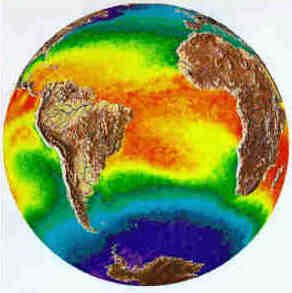
Seeing the Forest For the Trees With Analytics

Climate science, with its seemingly unlimited number of variables, is tailored-made for closer scrutiny using big data tools. With that notion in mind, researchers at the University of Alberta have begun using streaming analytics software provided by IBM to detect, visualize and—most important for meteorologists and climate scientists—predict in real-time subtle changes in the environment.
Canadian and international researchers working with the University of Alberta’s Enviro-Net project are attempting to monitor the impact of climate change on the world’s forests using InfoSphere Streams software developed by IBM’s Thomas J. Watson Laboratory. As the software is integrated into the university’s research, it is helping to reduce from months to minutes the time required to analyze climate data, IBM asserts.
The IBM software is touted as allowing climate researchers to predict droughts, forest fires and how boreal and tropical forests are responding to deforestation and climate change.
IBM said its analytics software would be used by the researchers to churn through more than 10,000 data points per second generated by sensors measuring carbon levels, soil moisture, relative humidity and atmospheric pressure. The sensor networks are installed in Brazil, Canada, Costa Rica and Mexico.
The big difference between earlier research and the new analytics software is its ability to deliver detailed results in real time. “When I started this project four years ago I had no idea how much data I would be generating, and we could not look at our data in a reasonable amount of time,” explained project leader Arturo Sanchez-Azofeifa of the university’s Department of Earth and Atmospheric Sciences. “It was taking something like six months to two years before we had usable insights.
“Now, we can basically ‘see’ the forests breathing in real time,” he added.
The university researchers also worked with IBM to develop a dashboard view of forest data that makes it easier to translate research results for policy makers.
IBM describes its InfoSphere Streams software as an advanced analytical platform that allows users to develop specific applications to analyze data in real time. IBM said the platform could handle data throughputs up to millions of events, messages or, in the case of the environmental research, sensor data points per second.
The University of Alberta researchers are using the analytics tool for what they refer to as “micro-meteorological monitoring” of forests. The atmosphere, soil and vegetation are viewed as a “continuum,” Sanchez-Azofeifa said.
The forest sensor networks include 40 nodes with three sensors per node that generate huge amounts of real-time data. Previously, researchers would have to trek into forests to collect and “slave” over data generated by the sensor networks. “Previously we would have to rely a lot on teams to go out in the field and collect the data,” said Cassidy Rankine, a member of the research team and a doctoral candidate in remote sensing. “
Now, the researchers “have the ability to really have our eyes in the field from here,” Rankine added.
Among the findings that can be drawn from the data collected by the analytics platform is how much carbon forests are absorbing, the researchers said.
“I see in the next five years better visualization techniques, better apps, better training of graduate students and a better understanding of ecological system processes that we don’t have today,” Sanchez-Azofeifa added.
Recent items:
Climate Researchers Crunch Data on Weather Extremes
Climate Data Being Analyzed to Predict California Droughts



























